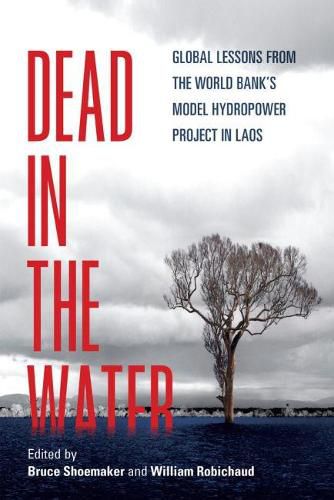Readings Newsletter
Become a Readings Member to make your shopping experience even easier.
Sign in or sign up for free!
You’re not far away from qualifying for FREE standard shipping within Australia
You’ve qualified for FREE standard shipping within Australia
The cart is loading…






This title is printed to order. This book may have been self-published. If so, we cannot guarantee the quality of the content. In the main most books will have gone through the editing process however some may not. We therefore suggest that you be aware of this before ordering this book. If in doubt check either the author or publisher’s details as we are unable to accept any returns unless they are faulty. Please contact us if you have any questions.
For decades, large dam projects have been undertaken by both nations and international agencies with the aim of doing good: preventing floods, bringing electricity to rural populations, producing revenues for poor countries, and more. But time after time, the social, economic, and environmental costs have outweighed the benefits of the dams, sometimes to a disastrous degree. In this volume, a diverse group of experts-involved for years with the Nam Theun 2 dam in Laos-issue an urgent call for critical reassessment of the approach to, and rationale for, these kinds of large infrastructure projects in developing countries.
In the 2000s, as the World Bank was reeling from revelations of past hydropower failures, it nonetheless promoted the enormous Nam Theun 2 project. NT2, the Bank believed, offered a new, wiser model of dam development that would alleviate poverty, protect the environment, engage locally affected people in a transparent fashion, and stimulate political transformation. This was a tall order. For the first time, this book shows in detail why, despite assertions of success from the World Bank and other agencies involved in the project, the dam’s true story has been one of substantial loss for affected villagers and the regional environment. Nam Theun 2 is an important case study that illustrates much broader problems of global development policy.
$9.00 standard shipping within Australia
FREE standard shipping within Australia for orders over $100.00
Express & International shipping calculated at checkout
This title is printed to order. This book may have been self-published. If so, we cannot guarantee the quality of the content. In the main most books will have gone through the editing process however some may not. We therefore suggest that you be aware of this before ordering this book. If in doubt check either the author or publisher’s details as we are unable to accept any returns unless they are faulty. Please contact us if you have any questions.
For decades, large dam projects have been undertaken by both nations and international agencies with the aim of doing good: preventing floods, bringing electricity to rural populations, producing revenues for poor countries, and more. But time after time, the social, economic, and environmental costs have outweighed the benefits of the dams, sometimes to a disastrous degree. In this volume, a diverse group of experts-involved for years with the Nam Theun 2 dam in Laos-issue an urgent call for critical reassessment of the approach to, and rationale for, these kinds of large infrastructure projects in developing countries.
In the 2000s, as the World Bank was reeling from revelations of past hydropower failures, it nonetheless promoted the enormous Nam Theun 2 project. NT2, the Bank believed, offered a new, wiser model of dam development that would alleviate poverty, protect the environment, engage locally affected people in a transparent fashion, and stimulate political transformation. This was a tall order. For the first time, this book shows in detail why, despite assertions of success from the World Bank and other agencies involved in the project, the dam’s true story has been one of substantial loss for affected villagers and the regional environment. Nam Theun 2 is an important case study that illustrates much broader problems of global development policy.